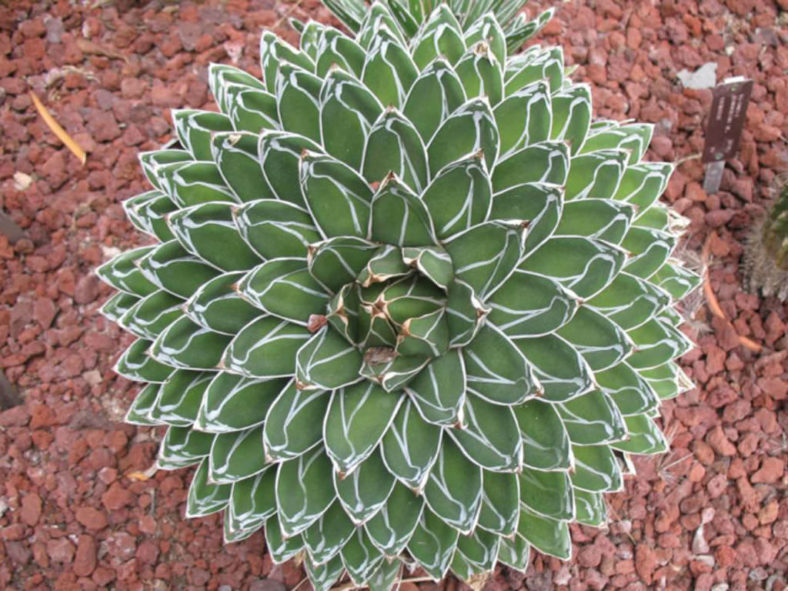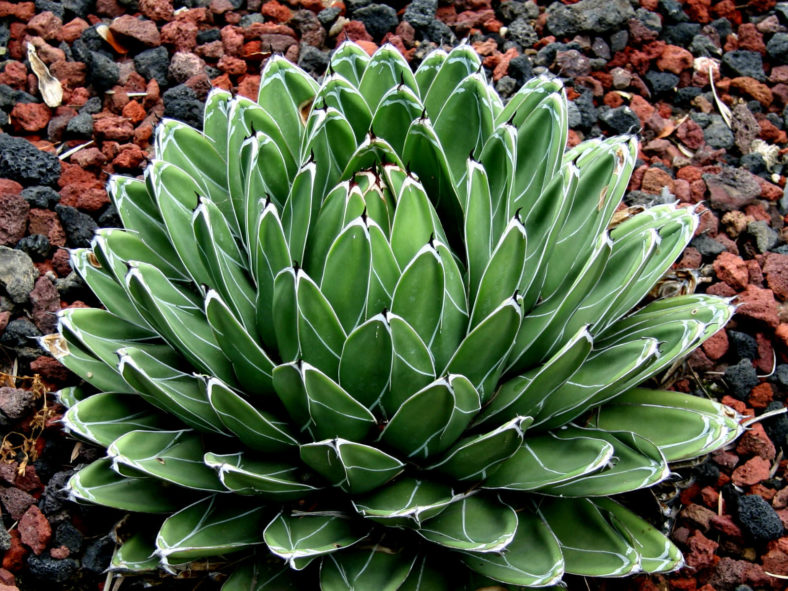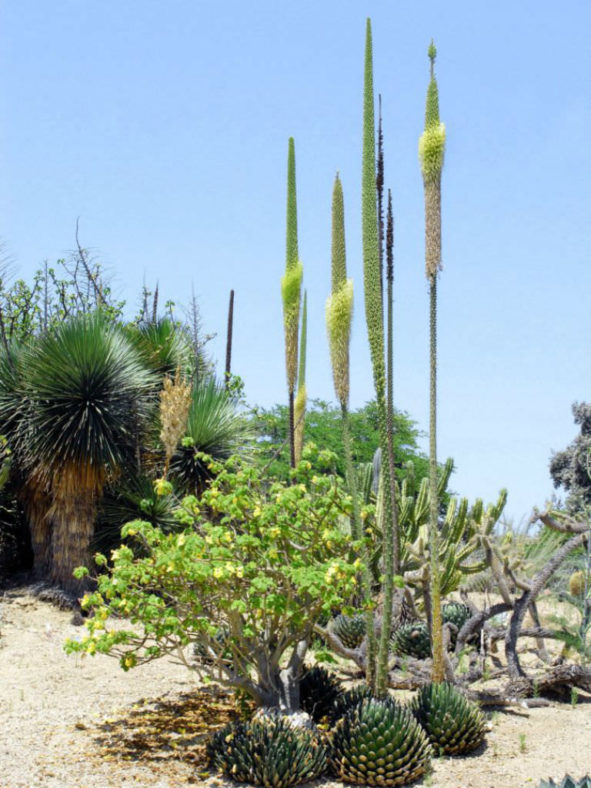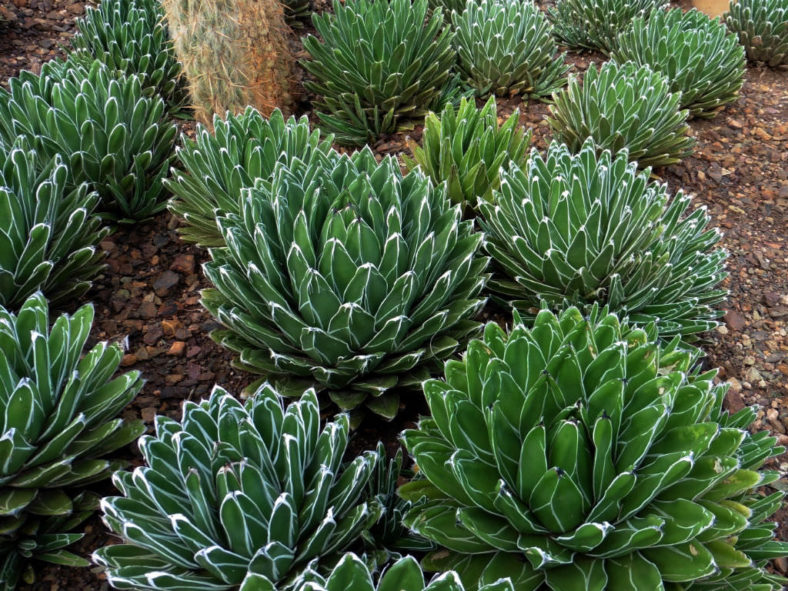Scientific Name
Agave victoriae-reginae T. Moore
Common Name(s)
Queen Victoria Agave, Queen Victoria Century Plant, Royal Agave
Synonym(s)
Agave victoriae-reginae f. victoriae-reginae, Agave victoriae-reginae subsp. victoriae-reginae
Scientific Classification
Family: Asparagaceae
Subfamily: Agavoideae
Genus: Agave
Etymology
The specific epithet "victoriae-reginae (pronounced vik-TOR-ee-ay ree-JIN-ay-ee)" honors Queen Victoria (1819-1901), Queen of the United Kingdom of Great Britain and Ireland (1837–1901).
Origin
Agave victoriae-reginae is native to Mexico (Chihuahuan Desert).
Description
Agave victoriae-reginae is a slow-growing succulent that forms a compact rosette of green leaves with attractive white markings, spineless margins, and a short, black terminal spine. The rosette usually grows solitary or rarely produces a few offsets and can reach a height of 1 foot (30 cm) tall and a diameter of 1.5 feet (45 cm). The leaves can measure up to 8 inches (20 cm) long and 1.2 inches (3 cm) wide. The markings are generally along leaf keels and margins.
The flowers are creamy-white to pale yellow or sometimes in shades of red and purple. They appear in summer on an unbranched spike that can grow up to 13.1 feet (4 m) tall. The rosette blooms only once when fully mature, usually after 20 to 30 years, and dies after flowering.

How to Grow and Care for Agave victoriae-reginae
Light: These plants require full sun to part shade. If you are growing Agaves indoors, choose a bright, sunny window with as much sun as possible. Agave plants love going outside from spring to fall.
Soil: Agaves will tolerate most soils as long as they have good drainage, but they prefer sandy or rocky soil.
Hardiness: Agave victoriae-reginae can withstand temperatures as low as 10 to 50 °F (-12.2 to 10 °C), USDA hardiness zones 8a to 11b.
Watering: Mature plants are very drought tolerant. From spring to fall, water your Agave thoroughly when the soil mix becomes dry. In winter, water sparingly about once a month. Plants in containers require more frequent watering than those in the ground.
Fertilizing: Give your Agaves a small amount of fertilizer in the spring during the first two years.
Repotting: When the pot becomes full of roots, it becomes pot-bound. If you notice your Agave becoming pot-bound, repot it with new soil in a pot slightly larger than the old one.
Propagation: Since it can take years to produce seeds, Agaves are usually propagated by offsets.
Learn more at How to Grow and Care for Agave.
Toxicity of Agave victoriae-reginae
Agave victoriae-reginae is not toxic to humans but may be mildly poisonous to children and pets.
Cultivars and Hybrids of Agave victoriae-reginae
- Agave victoriae-reginae 'Albomarginata'
- Agave victoriae-reginae 'Compacta'
- Agave victoriae-reginae 'Golden Princess'
- Agave 'Sharkskin Shoes'
Links
- Back to genus Agave
- Succupedia: Browse succulents by Scientific Name, Common Name, Genus, Family, USDA Hardiness Zone, Origin, or cacti by Genus
Photo Gallery
Click on a photo to see a larger version.


